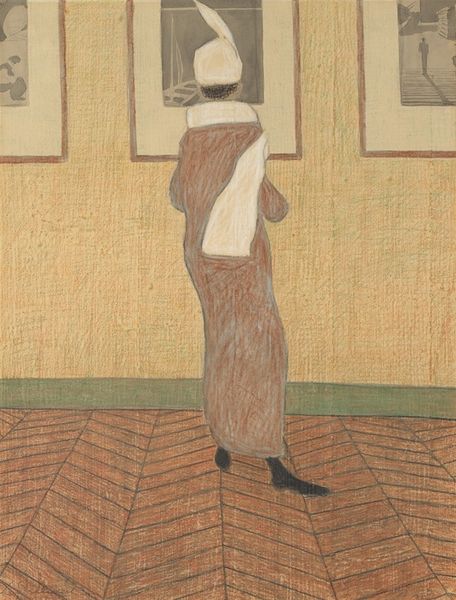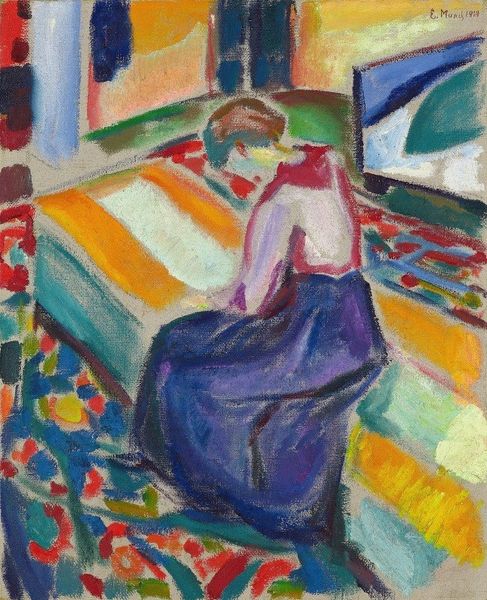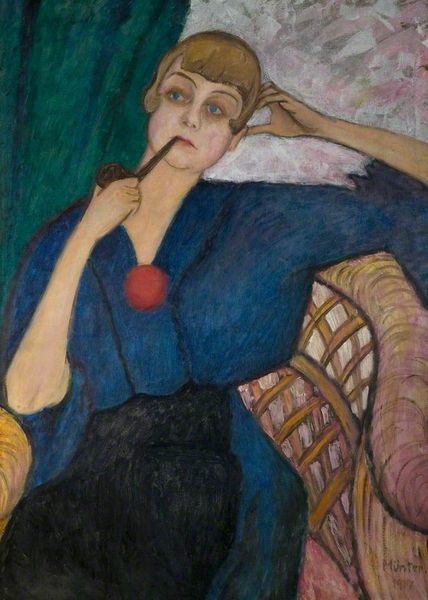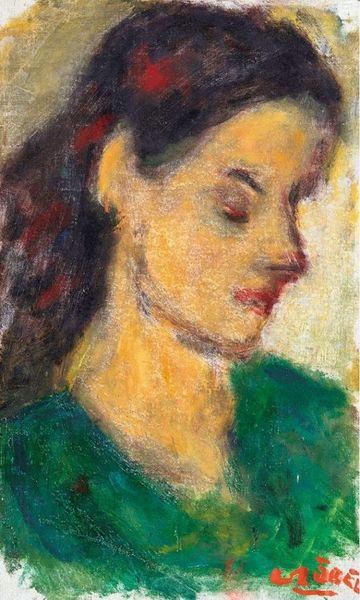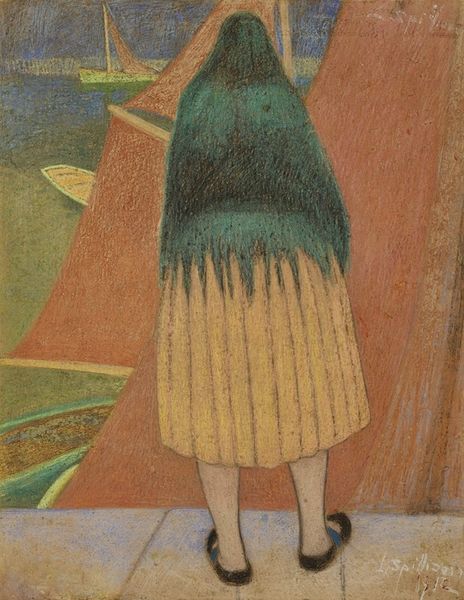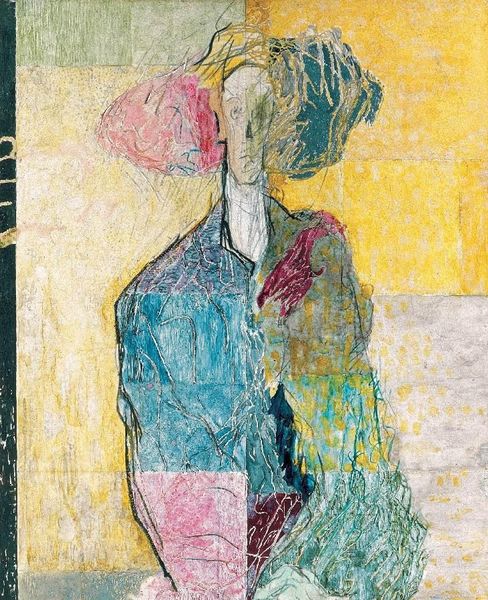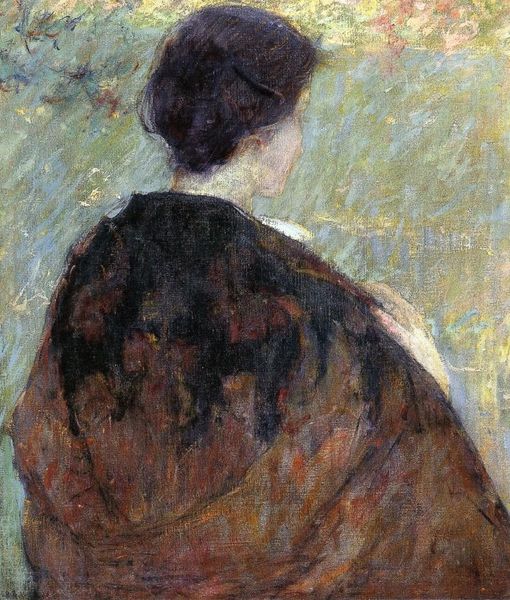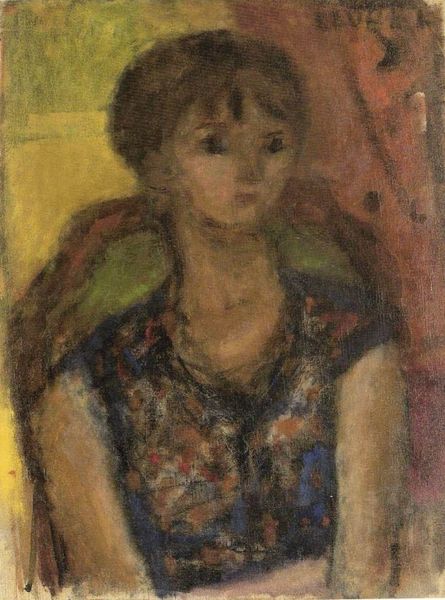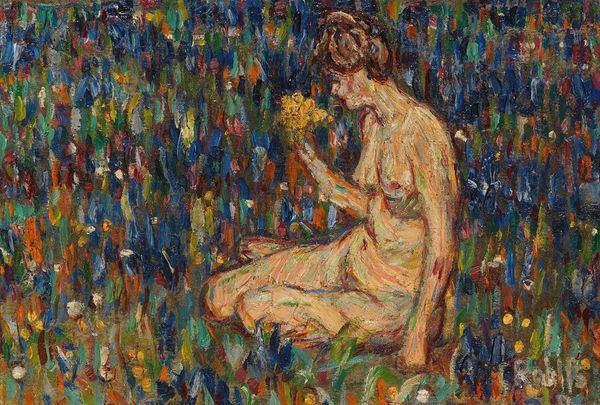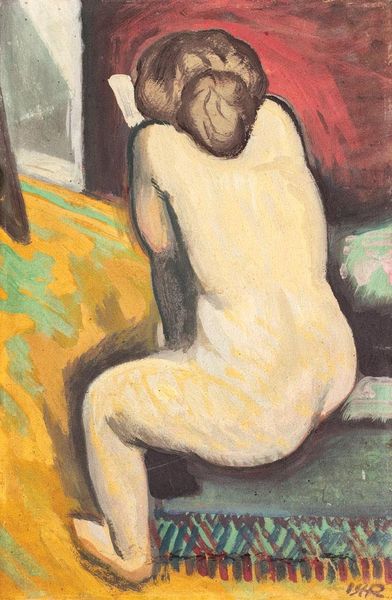
drawing, coloured-pencil, pastel
#
portrait
#
drawing
#
figurative
#
coloured-pencil
#
figuration
#
intimism
#
coloured pencil
#
pastel chalk drawing
#
symbolism
#
pastel
Copyright: Public Domain: Artvee
Curator: Here we have Léon Spilliaert's "Leunende Vrouw," or "Reclining Woman," created in 1912. It's primarily executed with colored pencil and pastel on paper. Editor: My initial reaction is one of quiet contemplation. There's a stillness, almost a melancholy, about this figure. The textured surface from the colored pencil seems to contribute to the mood. Curator: Absolutely. Spilliaert often depicted solitary figures in interiors, and this work fits well within his Symbolist period. We see echoes of artists like Munch, particularly in the sense of psychological tension conveyed through the figure. This work engages the politics of the individual experience. Editor: I find it interesting how the material almost disguises the subject, that painstaking colored pencil technique, a repetitive labor itself, almost overwhelms the form. It appears the whole scene might be shifting or shimmering. Does the materiality comment on female agency and labor? Curator: It could. During the early 20th century, women's roles were actively being debated and redefined in society. Spilliaert, consciously or not, captured something of this ambiguity. She’s passive, maybe waiting, maybe defiant. But ultimately her thoughts seem unknowable. Editor: The application itself really does echo themes of routine domestic labor. That painstaking mark-making mirrors other types of labor from this period that define that time, domestic service work perhaps. What does that pattern on the textile convey? The pattern-making itself suggests skill. Is she resting her arms on something made or bought? Is that pattern a material symbol of production? Curator: That’s a compelling question! The patterned fabric seems a little ambiguous, obscuring if its bought or made, mass produced or custom-crafted. Editor: There's a quiet drama to this piece. The light source, the stark contrast with the blue background—it elevates what could otherwise be a simple scene of domesticity into something quite profound through materials. Curator: For me, its appeal lies in its ambiguity and simplicity and the period’s complex view of women at the time. Editor: I think for me, the labor inherent in the medium and depicted composition suggests a rich narrative and is something I'll carry with me beyond my time here.
Comments
No comments
Be the first to comment and join the conversation on the ultimate creative platform.
